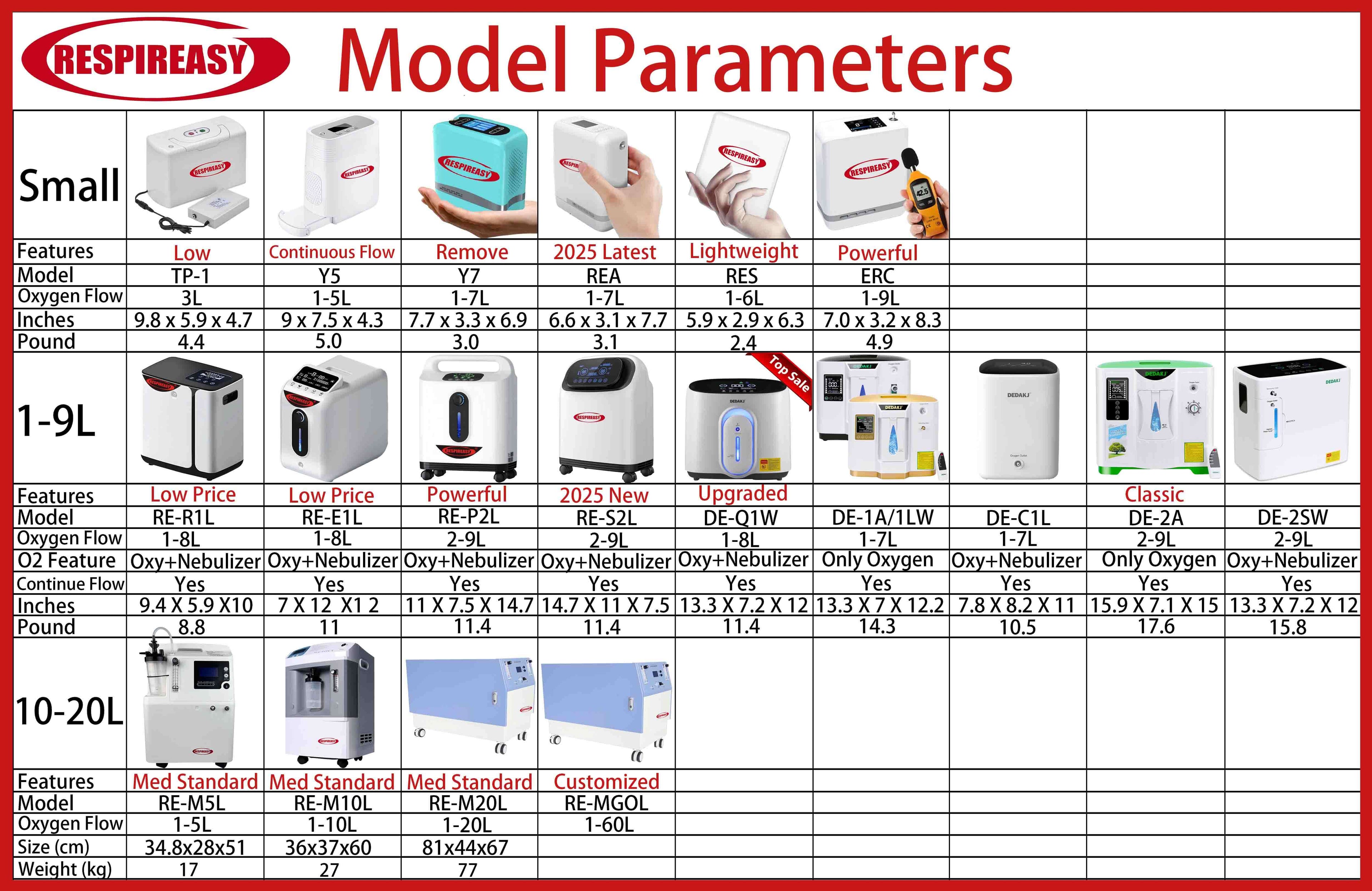
Oxygen Therapy: Getting Started with Home and Portable Oxygen Concentrators
Oxygen Concentrator
An oxygen concentrator is a medical device that separates nitrogen from the air around you, allowing you to breathe up to 95% pure oxygen. If you have a medical condition that affects your breathing, you may need an oxygen concentrator. Some oxygen concentrators are stationary and run on electricity. Others are battery-powered and portable.
What is an oxygen concentrator:
1. An oxygen concentrator (oxygen generator) is a medical device that can be used for oxygen therapy. If you have a condition that affects your lungs, or even if you have trouble breathing, an oxygen concentrator can help your body get the oxygen it needs to function.
2. Unlike compressed or liquid oxygen tanks that must be replaced or refilled when they run out, an oxygen concentrator constantly purifies the air around you (the atmosphere) to provide 90% to 95% pure oxygen. You breathe in oxygen through a plastic mask (worn over your mouth and nose) or a flexible plastic tube with two prongs (nasal cannula).
There are two main types of oxygen concentrators:
1. Stationary oxygen concentrators. A stationary oxygen concentrator weighs about 22 pounds (10 kilograms). It has handles to lift the device and wheels on the bottom to roll the device. It runs on electricity, so you can plug it into an electrical outlet in your home. If a power outage occurs, some brands of oxygen concentrators come with backup batteries or backup compressed oxygen tanks, so you can still receive oxygen therapy until the power is restored.
2. Portable oxygen concentrators. Portable oxygen concentrators are smaller and lighter than stationary oxygen concentrators, making them convenient for activities or travel. But their oxygen output is usually lower than that of stationary oxygen concentrators. Most portable oxygen concentrators use rechargeable lithium-ion batteries.
Medical Concentrator Home O2 Concentrator Portable Oxygen Concentrator
What conditions can be treated or managed with an oxygen concentrator:
1. Asthma. 2. Bronchitis. 3. Chronic obstructive pulmonary disease (COPD). 4. Cystic fibrosis. 5. Emphysema. 6. Heart failure. 7. Lung cancer. 8. Pneumonia. 9. Airway trauma (fractured ribs, collapsed lung, lung contusion). 10 Sleep apnea.
11. Some people, especially athletes, use oxygen concentrators when they travel to high altitudes. When you exercise, it's harder to breathe because your body needs to get more oxygen to your lungs. The lungs provide oxygen, which your body needs to function properly, including your muscles.
12. If you can't get enough oxygen from deep breathing, your cells convert carbohydrates into lactic acid, which produces short-lived energy. This process is called anaerobic glycolysis. Using an oxygen concentrator helps prevent your body from producing lactic acid, which can help increase energy, reduce fatigue, and improve training results.
How an oxygen concentrator works:
1. About 20% of the atmosphere most people breathe every day is oxygen. The rest is nitrogen, and small amounts of other gases. An oxygen concentrator takes in the atmosphere, removes the nitrogen, and collects pure oxygen for you to breathe.
2. First, it draws in the atmosphere through an air filter and presses it into an air compressor. The compressor pressurizes the air - just like blowing air into a balloon. As the pressure increases, the air enters a special filter. Oxygen molecules are smaller than nitrogen molecules, so the filter captures nitrogen and lets oxygen pass through and into a collection tank. The oxygen then flows to the oxygen outlet and through a mask or nasal cannula.
How many hours can an oxygen concentrator be used:
1. This depends on the model of oxygen concentrator, oxygen output, and number of batteries. The average life of a single-battery oxygen concentrator is 2 to 6 hours. The average life of a dual-battery oxygen concentrator is 5 to 13 hours.
2. A plug-in oxygen concentrator can operate as long as there is electricity in your home.
How long should you use an oxygen concentrator:
1. This depends on why you need supplemental oxygen. Most people must use supplemental oxygen for at least 15 hours a day. Some people need to use it 24 hours a day. Your healthcare provider will instruct you on how often to use it and what the output setting should be.
2. If your condition is only short-term, then you may only need one oxygen concentrator until you recover.
3. If you have a long-term condition, you may need to use an oxygen concentrator for life. The supplier https://airoxygenconcentrator.com will work with you to help you adjust to living with an oxygen regulator. It may take some adjustment, but it shouldn't interfere with your daily activities, including work, bathing, exercise, and travel.
What are the potential benefits of an oxygen concentrator:
1. The main benefit of an oxygen concentrator is that it can help you breathe easier. They don't cure your condition and may not completely relieve your breathlessness. But it should make it easier for you to breathe. The more oxygen in your blood, the more energetic you are and the better you sleep.
2. Another benefit is that, unlike other types of oxygen tanks, you don't need to refill an oxygen concentrator. As long as you have a source of energy, you have an unlimited supply of oxygen.
What are the disadvantages of an oxygen concentrator:
Pure oxygen can also be dangerous. It's not flammable. But it can make a fire burn hotter and faster. It can also cause an explosion. Make sure to place the oxygen concentrator at least 10 feet away from sources of high heat or flammable materials.
When should I call a healthcare provider?
If you experience symptoms of breathing in too much oxygen (oxygen toxicity) or too little oxygen (hypoxia) while using supplemental oxygen, you should call your healthcare provider.
Oxygen concentrator accessories should be replaced on time:
Original oxygen concentrator filters are important for your breathing and need to be replaced every 2-4 months.
Maximize the efficiency and life of top-quality oxygen concentrator with original dedakj oxygen filters. Designed to capture dust, pollen, and other contaminants, these filters ensure a clean and safe oxygen supply.


Oxygen Concentrator Filter Oxygen Concentrator Water Tank
Should I buy my own oxygen concentrator:
1. The upfront cost of buying an oxygen concentrator can be high. Many oxygen concentrators come with warranties that cover normal repairs. But you may have to pay a professional to repair or service your device. If your condition requires an oxygen concentrator in the short term.
2. If you have a long-term medical condition, it may be cheaper in the long run to buy an oxygen concentrator than to rent one. Another benefit of owning an oxygen concentrator is that you are getting a brand new device. If you rent one, it is usually in second-hand condition. It may be near the end of its useful life or prone to damage or failure.
3. If you have a medical condition that affects your lungs, an oxygen concentrator is a medical device that helps you breathe in oxygen. If you spend time at high altitudes, using an oxygen concentrator may also be beneficial for you. Whether you use it every day or occasionally, it may take some time to get used to it. Your healthcare provider will help you get used to using the oxygen concentrator so that it does not interfere with your normal activities. If you have any questions or concerns, your provider can help you.














